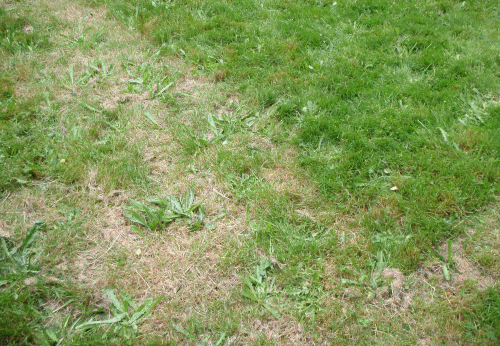
 3
3




"Study books and observe nature; if they do not agree, throw away the books." ~ William A. Albrecht
 5
5




 4
4




I’m considering sowing a novel endophyte fescue this fall.
Studies indicate that the presence of tall fescue and
the fescue endophyte diminish biological diversity on
the level of soil organisms, insects, plants, birds, and
mammals. Soil organisms, both beneficial and
detrimental to individual plants, exert a major
influence on the structure of plant communities.
Beneficial associations between mycorrhizal fungi
and plants occur in about 80% of all land plants;
these associations are critical in supplying specific
nutrients for many plants. Endophyte infected tall
fescue inhibits many soil organisms, including
pathogenic fungi, parasitic nematodes and beneficial
mycorrhizal fungi. The fescue endophyte produces
loline alkaloids that are toxic to at least twenty insect
species from ten families and five orders. The
endophyte also produces ergot alkaloids that are toxic
to mammals including domestic livestock.
Standing on the shoulders of giants. Giants with dirt under their nails
 2
2




Tj Jefferson wrote:
I’m considering sowing a novel endophyte fescue this fall.
Based on my conversations with the local grass expert, Leora is correct. I have tried to introduce perennial rye and bluegrass to hopefully fill in the field, the fescue was really patchy. The big issue is that fescue is forgiving of overgrazing. So don't overgraze. Eventually the better grasses can come in. I am a big fan of the deep-rooting grasses, and per Greg Judy, if you graze right, they will move in. Fescue is no match for gamagrass or big bluestem. Let the field get really high before grazing.
I don't have the grazers yet, so I'm just trying to get something that will support a year of grazing when I get them.
"Study books and observe nature; if they do not agree, throw away the books." ~ William A. Albrecht
 3
3




Standing on the shoulders of giants. Giants with dirt under their nails




Tj Jefferson wrote:
From the USDA guide
Studies indicate that the presence of tall fescue and
the fescue endophyte diminish biological diversity on
the level of soil organisms, insects, plants, birds, and
mammals. Soil organisms, both beneficial and
detrimental to individual plants, exert a major
influence on the structure of plant communities.
Beneficial associations between mycorrhizal fungi
and plants occur in about 80% of all land plants;
these associations are critical in supplying specific
nutrients for many plants. Endophyte infected tall
fescue inhibits many soil organisms, including
pathogenic fungi, parasitic nematodes and beneficial
mycorrhizal fungi. The fescue endophyte produces
loline alkaloids that are toxic to at least twenty insect
species from ten families and five orders. The
endophyte also produces ergot alkaloids that are toxic
to mammals including domestic livestock.
Yuck!
"Study books and observe nature; if they do not agree, throw away the books." ~ William A. Albrecht
 3
3




I don't know a whole lot about grasses. I need to go do some reading on other grasses, like orchard, meadow, and timothy grasses as something to consider. They may already be there on my farm, and I just don't know how to identify them.
What kind of blue grass are you planting?
Standing on the shoulders of giants. Giants with dirt under their nails
 2
2




Standing on the shoulders of giants. Giants with dirt under their nails
 2
2




 2
2




 4
4




G C Childers wrote:
I'm open to ideas but spraying isn't one of them.
"Study books and observe nature; if they do not agree, throw away the books." ~ William A. Albrecht
 1
1





|
Bring me the box labeled "thinking cap" ... and then read this tiny ad:
Switching from electric heat to a rocket mass heater reduces your carbon footprint as much as parking 7 cars
http://woodheat.net
|


